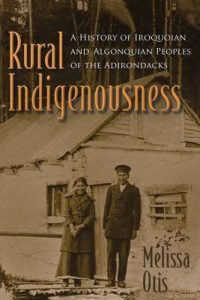
Part Two
This is a continuation of the review from last week.
Last week’s post discussed Indigenous peoples in the Adirondacks before European settlement: Iroquois, Abenaki, and Mahican nations pre-contact and later Algonquian peoples displaced by English settlement along the Atlantic coast. According to Melissa Otis, much of the 1700s was characterized by indigenous accommodation of Euro-colonial hunters and trappers and a few settlers. Shared land use was negotiated through family alliances, often cemented by intermarriage. The period after the Revolutionary War brought a sharp increase in violence and upheaval as colonial expansion continued.
The violence itself was not altogether new. Before European contact, Iroquois and Algonquian peoples sometimes came into violent conflict over shared resources and disputed territories. What changed was the inability of indigenous groups to collectively resolve disputes. Euro-Americans had the upper hand. Even accounting for the primitive legal establishment, acts of aggression against indigenous people were under-prosecuted. Otis was not able to name a single trial for murder or violent aggression where the White perpetrator was convicted. Many Euro-American settlers, trappers, and businessmen continued negotiating with indigenous peoples on friendly terms; others simply took what they wanted, backing up their claims with violence. Still others, nursing hostility through prejudice or historical grievances, simply lashed out in unprovoked aggression. Copious amount of alcohol consumed by both White and indigenous men did not help the situation.
As competition with White trappers increased, mining and lumbering became established, and settlement expanded, indigenous groups found it more difficult to support traditional ways of life. Access to hunting and fishing territories became limited and animal populations declined. Euro-Americans appropriated Abenaki and Mohawk seasonal camps, claiming these peoples, with territories on both sides of the border, were in fact “Canadian Indians.” Dependence on the emerging wage economy further fractured indigenous communities and attenuated traditional practices.
There are two stories told about colonialism in America. In one story, the one usually told about the Adirondacks, the land was empty and unused, available for settlement. In another, acknowledged in more populated areas of the country, the people already living on the land were either massacred or uprooted in forced relocations. The indigenous people in the Adirondacks were not massacred, even though sporadic deaths by violence went unatoned. Nor were they physically relocated en masse, even though many moved away as traditional livelihoods evaporated. Neither story fits, although indigenous peoples did lose land, traditions, and social cohesion.
The next installment will discuss how indigenous people in the Adirondacks adapted to changing circumstances in the second half of the nineteenth century.
